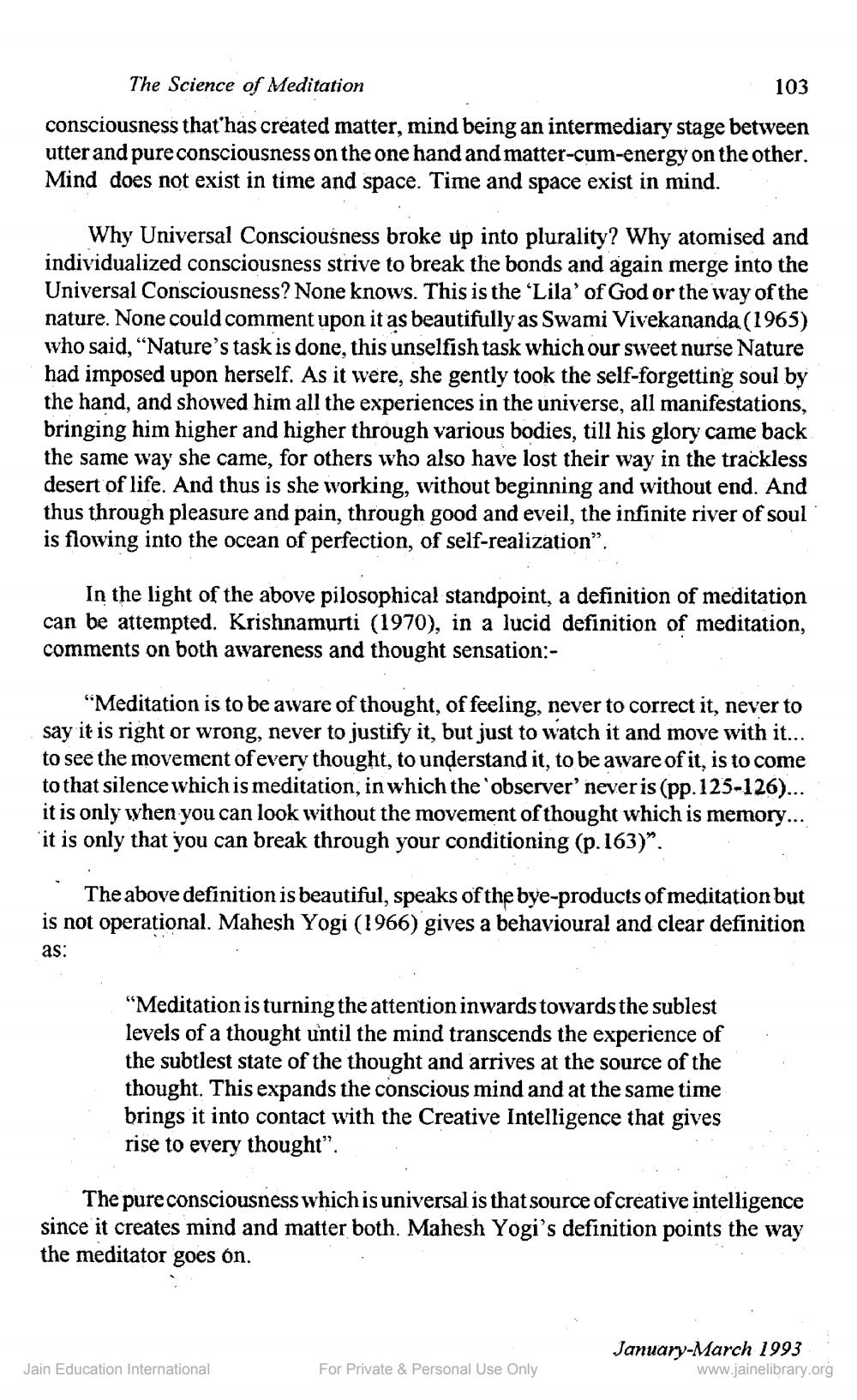________________
The Science of Meditation
103 consciousness that'has created matter, mind being an intermediary stage between utter and pure consciousness on the one hand and matter-cum-energy on the other. Mind does not exist in time and space. Time and space exist in mind.
Why Universal Consciousness broke up into plurality? Why atomised and individualized consciousness strive to break the bonds and again merge into the Universal Consciousness? None knows. This is the ‘Lila' of God or the way of the nature. None could comment upon it as beautifully as Swami Vivekananda (1965) who said, “Nature's task is done, this unselfish task which our sweet nurse Nature had imposed upon herself. As it were, she gently took the self-forgetting soul by the hand, and showed him all the experiences in the universe, all manifestations, bringing him higher and higher through various bodies, till his glory came back the same way she came, for others who also have lost their way in the trackless desert of life. And thus is she working, without beginning and without end. And thus through pleasure and pain, through good and eveil, the infinite river of soul is flowing into the ocean of perfection, of self-realization”,
In the light of the above pilosophical standpoint, a definition of meditation can be attempted. Krishnamurti (1970). in a lucid definition of meditation, comments on both awareness and thought sensation:
“Meditation is to be aware of thought, of feeling, never to correct it, never to say it is right or wrong, never to justify it, but just to watch it and move with it... to see the movement of every thought, to understand it, to be aware of it, is to come to that silence which is meditation, in which the observer' neveris (pp. 125-126)... it is only when you can look without the movement of thought which is memory... it is only that you can break through your conditioning (p. 163)".
The above definition is beautiful, speaks of the bye-products of meditation but is not operational. Mahesh Yogi (1966) gives a behavioural and clear definition
as:
"Meditation is turning the attention inwards towards the sublest levels of a thought until the mind transcends the experience of the subtlest state of the thought and arrives at the source of the thought. This expands the conscious mind and at the same time brings it into contact with the Creative Intelligence that gives rise to every thought".
The pure consciousness which is universal is that source of creative intelligence since it creates mind and matter both. Mahesh Yogi's definition points the way the meditator goes on.
January-March 1993
www.jainelibrary.org
Jain Education International
For Private & Personal Use Only




